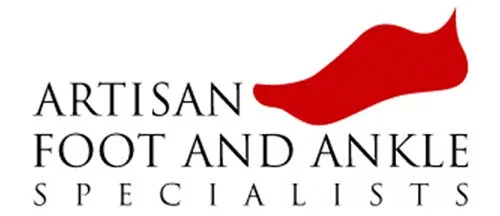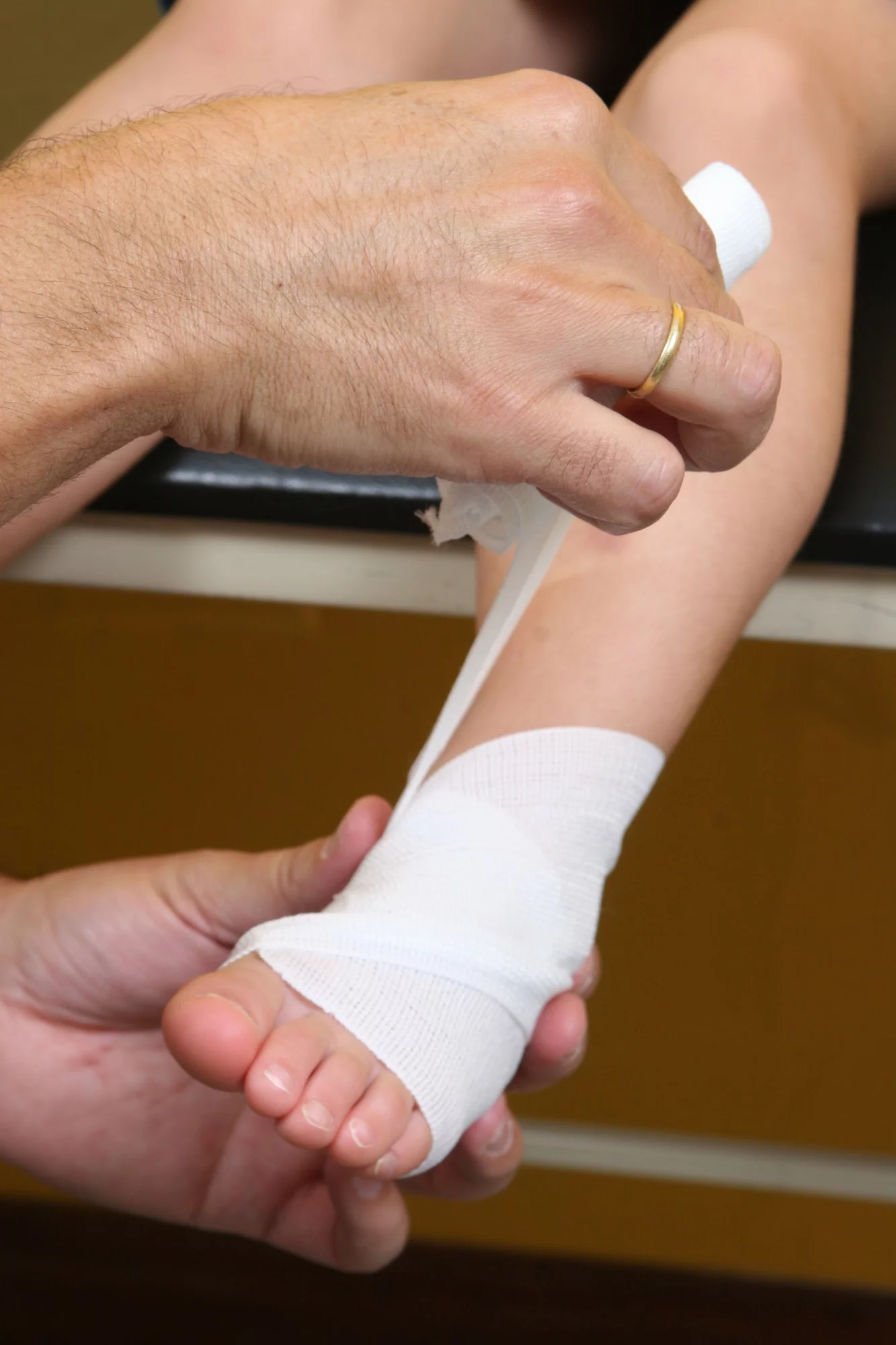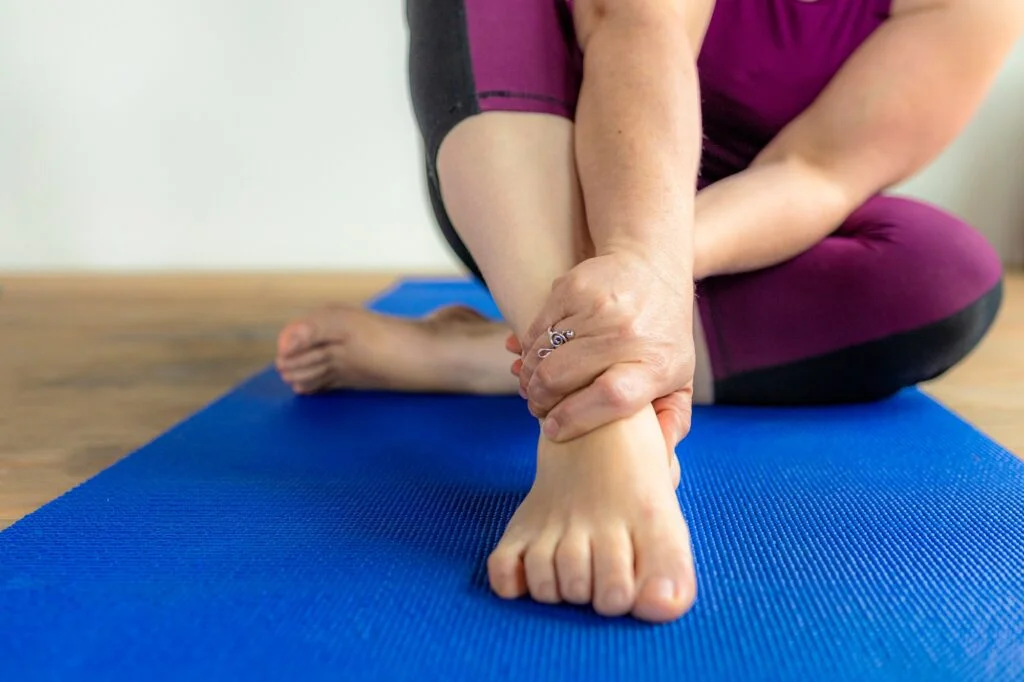An ankle sprain refers to tearing of the ligaments of the ankle. The most common ankle sprain occurs on the lateral or outside part of the ankle. This is an extremely common injury which affects many people during a wide variety of activities. It can happen in the setting of an ankle fracture (i.e. when the bones of the ankle also break). Most commonly, however, it occurs in isolation.
What are the symptoms of ankle sprains?
Patients report pain after having twisted an ankle. This usually occurs due to an inversion injury, which means the foot rolls underneath the ankle or leg. It commonly occurs during sports. Patients will complain of pain on the outside of their ankle and various degrees of swelling and bleeding under the skin (i.e. bruising). Technically, this bruising is referred to as ecchymosis. Depending on the severity of the sprain, a person may or may not be able to put weight on the foot.
What are the risk factors for an ankle sprain?
As noted above, these injuries occur when the ankle is twisted underneath the leg, called inversion. Risk factors are those activities, such as basketball and jumping sports, in which an athlete can come down on and turn the ankle or step on an opponent’s foot.
Some people are predisposed to ankle sprains. In people with a hindfoot varus, which means that the general nature or posture of the heels is slightly turned toward the inside, these injuries are more common. This is because it is easier to turn on the ankle.
In those who have had a severe sprain in the past, it is also easier to turn the ankle and cause a new sprain. Therefore, one of the risk factors of spraining the ankle is having instability. Those who have weak muscles, especially those called the peroneals which run along the outside of the ankle, may be more predisposed.



